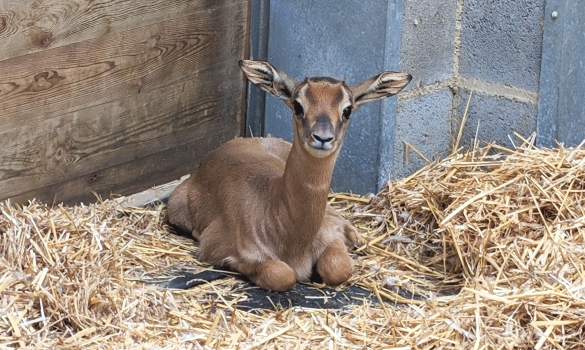

The animal arrived in Barcelona Zoo 20 years ago at the request of the authorities and through an embargo to ensure its care and welfare
The rhino’s health had deteriorated in recent weeks, owing to age-related problems
Barcelona Zoo has specialised in geriatric animal care, becoming a leading international centre for the care and welfare of animals of an advanced age
Barcelona Zoo has lost one of its best-loved inhabitants, Pedro the rhino, one of the oldest animals of this species in the world according to existing records. Pedro died this morning. As a result of his age, some days ago he started to become weaker and increasingly more fragile to the point where there was no way of recovering, despite the care given by the specialist staff at the Zoo.
The exact age of the rhino is unknown, but using existing customs records estimates put his age at between 53 and 54. Considering the maximum life expectancy of the species is between 40 and 50 years old, Pedro was the oldest white rhino in Europe – there are currently 339 in centres belonging to the European Association of Zoos and Aquaria (EAZA) – and one of the four oldest out of nearly 800 in the world, according to existing records.
Object of an embargo, he found shelter in Barcelona Zoo
Pedro arrived in Barcelona Zoo on 2 December 2003, coming from another zoo at the request of the authorities responsible for finding him a new home that would guarantee his care and welfare. The data available show he had been imported from South Africa in 1972 and transferred to the Spanish state in a very different context to the current one, when the movement of animals was not regulated to the degree that it is today through international legislation.
At Barcelona Zoo he found shelter and living conditions which were suitable for his species. Pedro was a calm and sociable animal, a positive soul always willing to interact with his keepers. Given his age, in recent years he had received specialised geriatric care to minimise pain caused by the problems he suffered with his joints, as well as other discomfort. The director of Barcelona Zoo, Antonio Alarcan, noted “an animal has died which was much loved by us all, an individual who over these years received maximum care from the team of specialists at the Zoo, who gave him the assistance he needed. Pedro represents one of the most important aims of Barcelona Zoo today, to provide shelter and ensure the welfare of animals which require special protection, whether they are from a species whose natural habitat is threatened or whether they have special needs as a result of their own history”.
Barcelona Zoo is a world leader in the care of ageing animals
The Zoo has taken in various animals of advanced ages over the years, such as Pedro the rhino and elephants Susi, Yoyo and Bully, with specific physical and emotional needs. This has made the centre a leader in geriatric animal care, a specialisation achieved in conjunction with the Zoo Animal Welfare Education Centre (ZAWEC) at the Autonomous University of Barcelona, positioning Barcelona Zoo as an international leader in the care and welfare of these animals.
In line with its new model, Barcelona Zoo now focuses its work on species that require special protection owing to their conservation status in the natural world. It is also committed to animal welfare, meaning it is always available to work with the authorities and welcome animals which need a new home where they can live in conditions suited to their species.
Ambassador for a threatened species
Pedro was a southern white rhinoceros (Ceratotherium simum simum), a subspecies classed as Near Threatened (NT) on the International Union for Conservation of Nature (IUCN) Red List of Threatened Species, and for which a special EAZA Ex-situ Programme (EEP) from the European Association of Zoos and Aquaria exists, which Pedro was included in.
Although until recently the species was in serious danger of extinction, like all other rhinos, owing to illegal hunting for their horns, the southern white rhinoceros is the species which has made the strongest recovery in recent years, thanks to the strict protection measures applied. Not long ago, this species only lived in the Republic of South Africa, but more recently been it has been reintroduced in other places such as Botswana, Namibia, Zambia, Kenya and Zimbabwe.
The white rhino is the largest of the five rhinoceros species currently in existence. Some individuals grow to nearly 2 metres in height and 4 metres in length and weigh nearly 3,500 kg. The species lives in savannah areas with trees, herbaceous plains, open bush regions and even wetlands. Males tend to have solitary habits.




